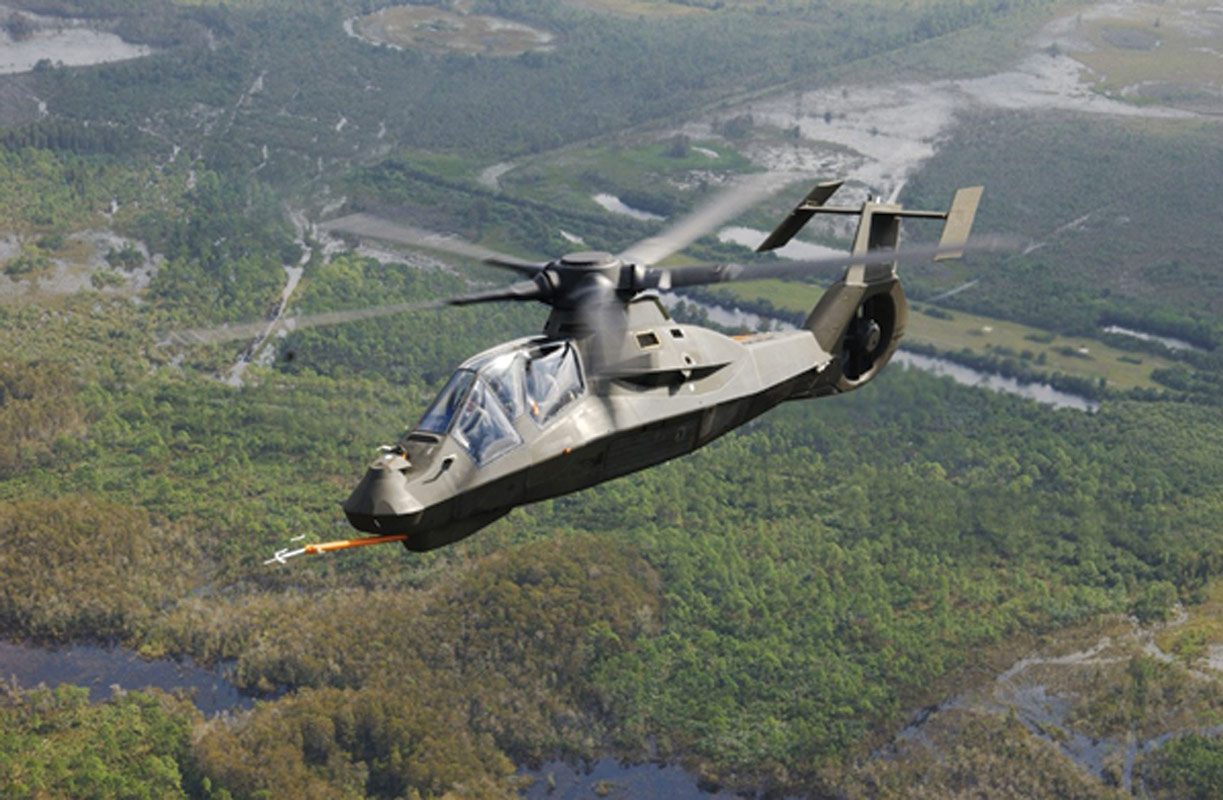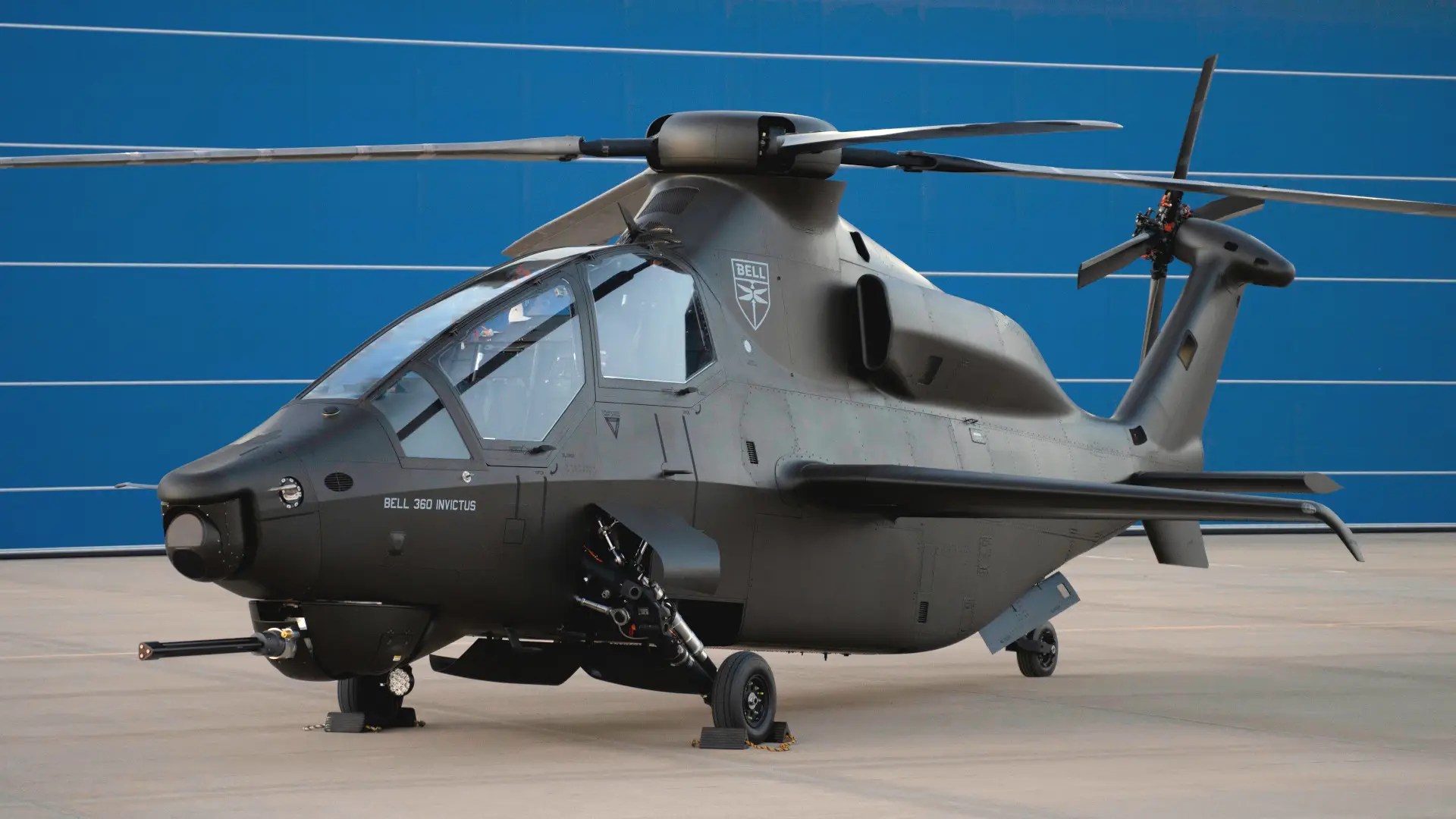After Junking 6th-Gen FARA Program, Why US Needs ‘Discarded’ RAH-66 Comanche Helos More Than Ever?

The cancellation of the Future Attack Reconnaissance Aircraft (FARA) by the US Army six years after it was initiated represents a 40-year failed effort to develop a light-armed scout helicopter.
The US, 20 years ago, had a perfect reconnaissance-strike stealth helicopter that it needs today. That was the RAH-66 Comanche, possibly the only one-of-a-kind, that it canceled in 2004.
This was 13 years after the Cold War ended, under then Secretary of Defense Donald Rumsfeld. Ironically, it was designed to fight the erstwhile USSR’s Red Army until the Communist superpower dissolved in 1991.
The cancellation came at a time when the West did not have peer competitors and found the overly advanced helicopter to be overkill for the raggedy non-state actors it was fighting in Iraq and Afghanistan.
Ironically, 20 years later, both Russia and China have risen technologically and militarily, prompting the US to reorient itself to fighting conventional wars.
US’s ‘Future’ Recon & Attack Helicopter Programs
FARA was a part of the larger Future Vertical Lift (FVL) program, the other component being the Future Long Range Assault Aircraft (FLRAA). While the FLAARC is meant to replace the Sikorsky S-80 Black Hawk, the FARA was to replace the OH-58D Kiowa Warrior to perform lightly-armed reconnaissance.
For the FLAARC, the US Army has tested two technology demonstrators (TD) – Sikorsky-Boeing’s Defiant X’, a contra-rotor (or coaxial rotor) helicopter, and Bell’s V-280 tilt-rotor.
The FARA, until it was canceled, had Bell’s 360 Invictus and Sikorsky’s Raider X as contenders. The latter, incidentally, is a shorter, slightly modified version of the Defiant X.

AH-64 & OH-58D ‘Teaming’ To Decimate Soviet Armor
The Vietnam War-era OH-58D, with its large and distinctive mast-mounted electro-optical sight, would fly ahead, scout, and locate targets for the AH-64 Apache, which would fire long-range Hellfire missiles on Soviet tank columns.
However, the OH-58D, a militarized Bell 206, was a development of the Vietnam-era OH-58A. The Army adopted the former in the mid-1980s.
Enter The Stealthy Comanche
Knowing that the OH-58D would still be immensely vulnerable to the newer Russian medium and long-range air defense systems, the US Army simultaneously also commissioned the Light Helicopter Experimental Program. The Kiowa Warrior went on to be retired in 2017.
This birthed the revolutionary Boeing-Sikorsky RAH-66 Comanche. The Comanche looked like it was designed for stealth. Its main rotor assembly was covered in a thick casing while the tail rotor was shrouded in a fenestron-assembly encasement to significantly reduce noise.
An encased tail rotor also provided a less reflective surface for radar waves, especially when scanned from the front (frontal aspect stealth). The other two radar-beating features included a retractable landing gear and folding weapons stubs that retracted into internal weapons bays.
These could also collectively carry six Hellfires that the Comanche could fire on enemy tanks or land targets to defend itself or during ‘reconnaissance-strike’ missions where it was meant to act alone.
It almost looked like a pen from the front, with no protruding surfaces, allowing excellent airflow, aerodynamics, and maneuverability to fly between valleys and skim over treetops nimbly.
Had the program continued, the production versions would have included nose-mounted electro-optical systems and possibly Electronic Support sensors to deflect or jam incoming anti-air missiles.
‘Drones Provide What the Scout Helicopter Can’
US Army Chief of Staff General Randy George announced the program’s cancellation on February 8, when it had cost $2 billion. “We are learning from the battlefield — especially in Ukraine — that aerial reconnaissance has fundamentally changed,” he said.
He further explained, “Sensors and weapons mounted on a variety of unmanned systems and in space are more ubiquitous, further reaching, and more inexpensive than ever before.” The Army announced it would expand its expenditure on uncrewed aircraft following a “sober assessment of the modern battlefield.”
Helicopters & Conventional Weapons Still Relevant
What is surprising is the US Army planners’ puzzling rationale for the cancellation, which they say flows from lessons from the Ukrainian battlefield.
As General Randy indicated, the money saved from the FARA cancellation would be redirected towards “uncrewed aircraft” or the simple, cheap, mass-produced, and attritable drones that they believe have become a substitute for conventional platforms.
That implies the US would seek more advanced versions of the Textron RQ-7Bv2 Block 3 UAV, which have been tested as the Apache’s ‘wingman’ over the last few years. These versions could lean towards being more independent from human control, being largely in the autonomous or semi-autonomous category.
This lesson is partially true: the impact of simple drones has not exactly made regular weapons redundant. Ukraine’s reliance on drones for artillery roles is driven by the destruction of its defense industry.
This doesn’t mean Kyiv wouldn’t want the regular field-towed or self-propelled guns (SPG) if they were available. Russia, on the contrary, uses drones (both advanced and simple, expendable UAVs for reconnaissance, surveillance, artillery fire correction, and one-way kamikaze roles) as well as sophisticated guns, rocket tube artillery, and attack helicopters.
These are the Kamov Ka-52 Alligator, Mi-28 Havoc, and Mi-35 Hind attack helicopters, along with the Mi-8MTPR-1 electronic warfare (EW) helicopter. It is sometimes paired with attack helicopter formations to jam and protect them from surface-to-air missile threats and enemy EW.
This suggests that the US Army seems to have missed out on how drones have not exactly relegated traditional weapons to obsolescence. Russia is reported to have destroyed a whopping 45 percent of NATO artillery using Lancet kamikaze drones.

Russia has a large artillery inventory that is fed by a stable defense industrial base that can keep producing guns and ammunition. This combination was crucial in thwarting Ukraine’s counteroffensive in mid-2023.
The Ka-52’s ‘M’ variant, boasting a newer long-range electro-optical system and complementing air-to-ground missiles, also functioned effectively as a scout while it hit Ukraine’s Western-origin tanks.
Put differently, helicopters remain highly relevant in today’s battlefield. Advanced air defenses and electronic warfare systems in a complex and multi-dimensional battlespace would throw up a variety of tactical situations that could expose the limitations of drones.
Remotely controlled drones might not be capable of quick maneuvers and turns owing to the control lag.
Autonomous aircraft, meanwhile, may be unable to make intricate decisions or rapidly adapt to changing enemy tactics, owing to drawbacks with artificial intelligence (AI) or advanced algorithms that control them.
It is, however, highly possible that the US Army’s flawed approach is more due to budgetary constraints and program mismanagement rather than military competency that has failed to take lessons from Ukraine.
- Questions and Answers
- Opinion
- Story/Motivational/Inspiring
- Technology
- Art
- Causes
- Crafts
- Dance
- Drinks
- Film/Movie
- Fitness
- Food
- Παιχνίδια
- Gardening
- Health
- Κεντρική Σελίδα
- Literature
- Music
- Networking
- άλλο
- Party
- Religion
- Shopping
- Sports
- Theater
- Wellness
- News
- Culture
- War machines and policy

